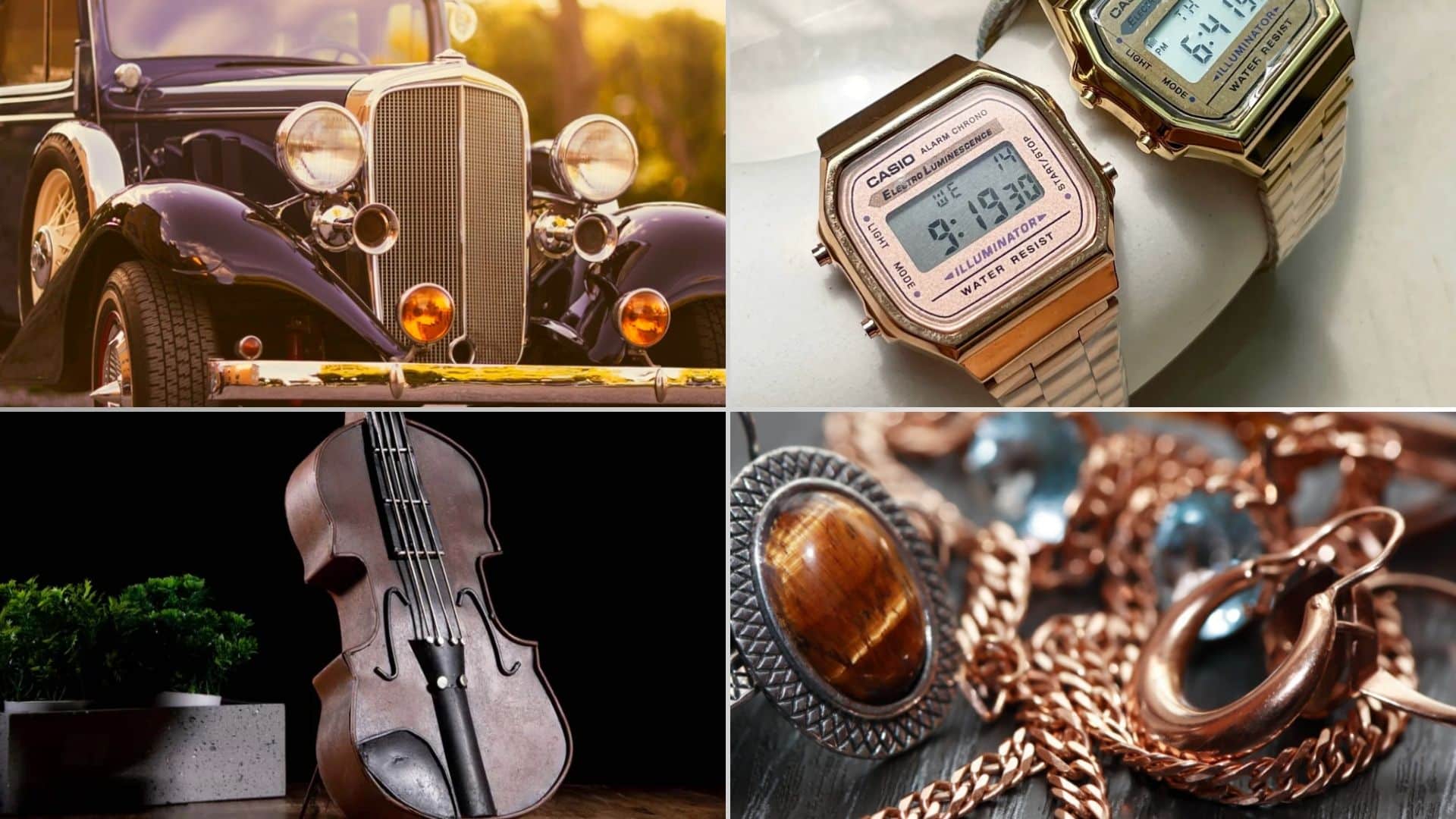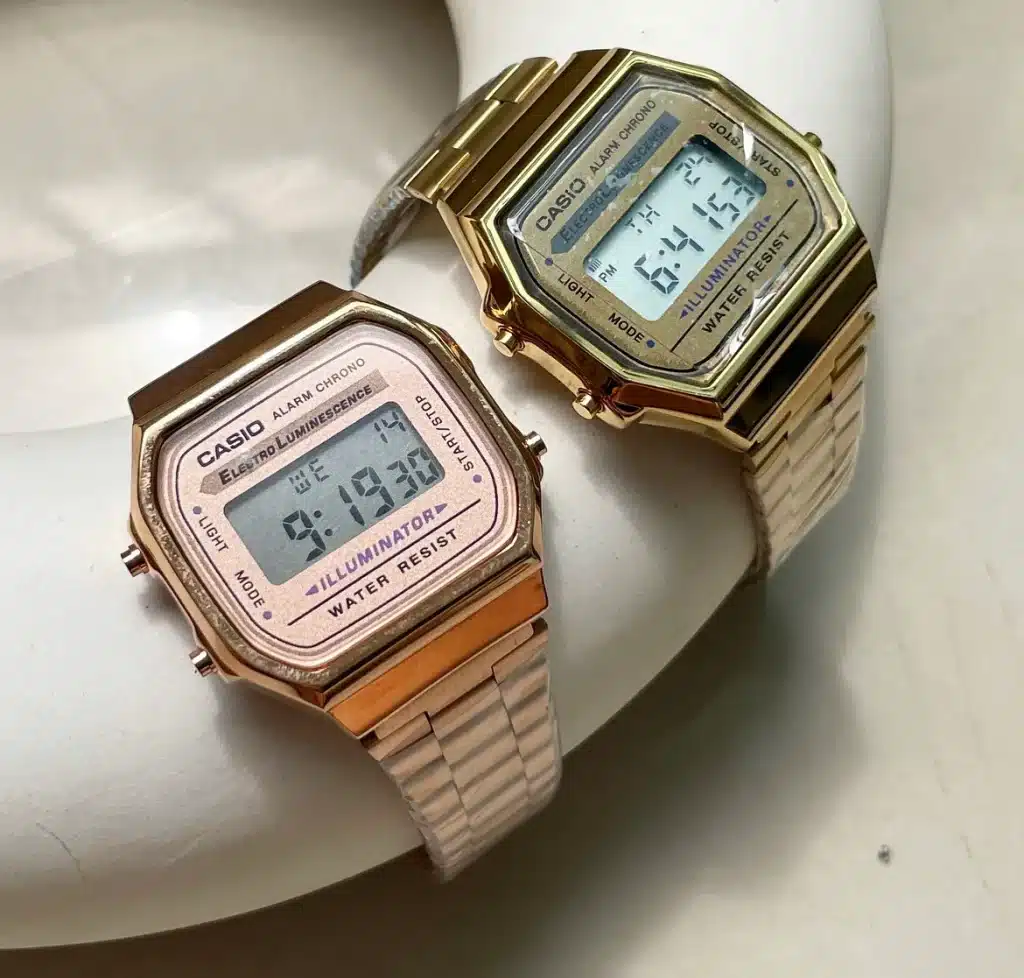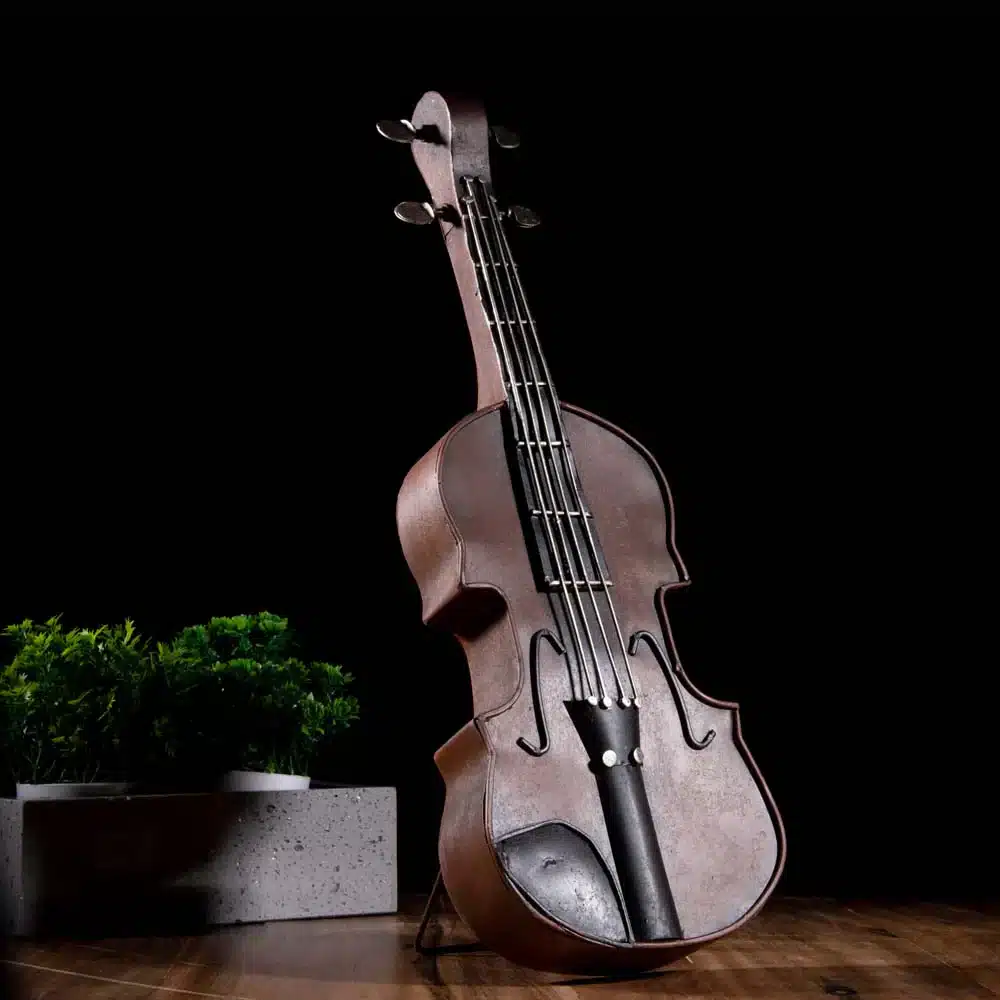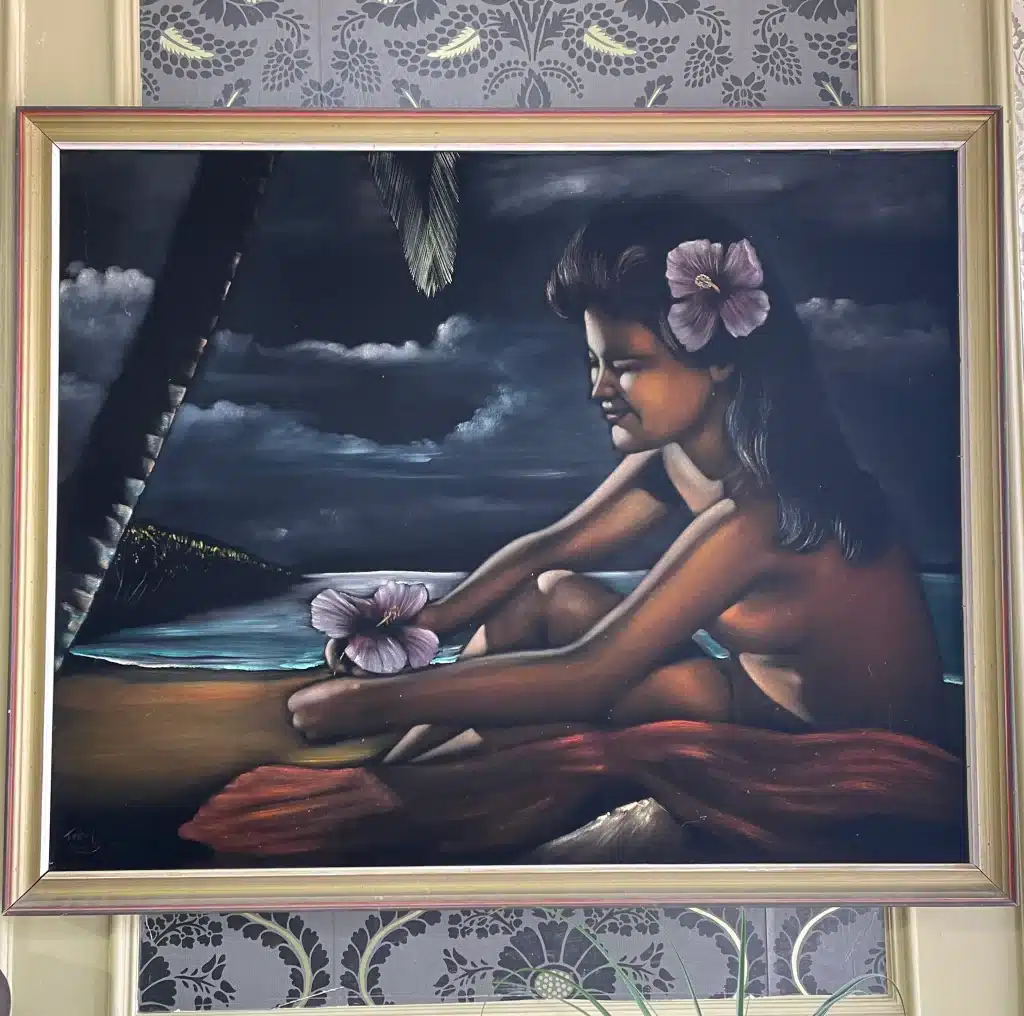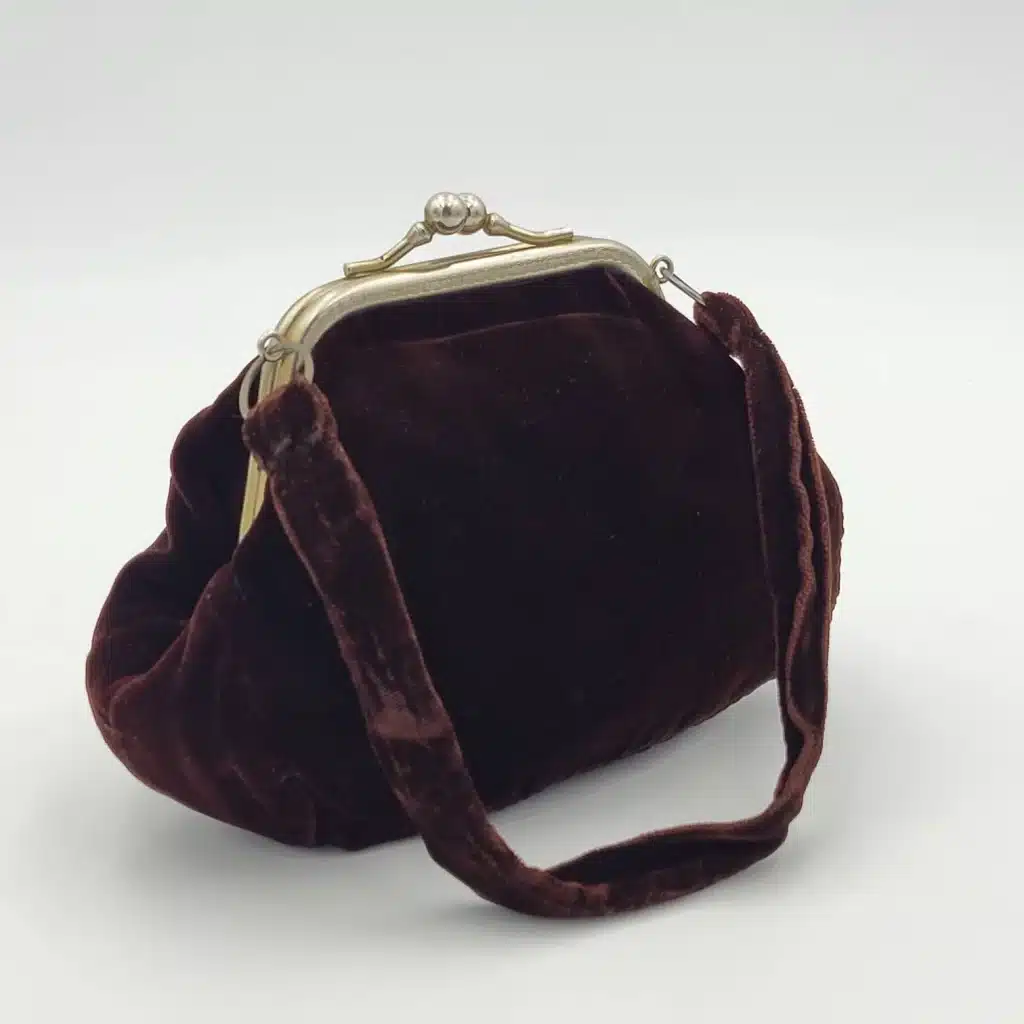Vintage collectors know the thrill of discovering rare and valuable items from the past. However, with so many collectibles, knowing where to start your search can be hard.
If you want to narrow your focus and find some truly special pieces, why not explore vintage items that start with the letter “V”?
In this blog post, we’ll introduce you to 20 valuable vintage items that begin with “V,” ranging from classic toys to elegant decorative pieces.
Whether you’re a seasoned collector or just starting, this list will give you some exciting new ideas for your next vintage treasure hunt.
20 Valuable Vintage Items that Begin with V
1. Vintage Vases

Vases have a long and rich history, with their designs evolving.
Ancient civilizations like Egypt, Greece, and China used vases for practical and decorative reasons.
These early vases often featured simple designs and were made from materials like clay and bronze.
As time passed, vase designs became more complex and artistic, especially during the Renaissance period in Europe.
In the 19th and 20th centuries, art movements such as Art Nouveau and Art Deco introduced new styles and aesthetics to vase design, pushing the boundaries of form and function.
Unique Characteristics
Vintage vases are known for their diverse range of materials and styles.
Some of the most sought-after vases are made from high-quality materials like Chinese porcelain, Italian Murano glass, and Bohemian crystal.
Each material has its own unique properties and aesthetic appeal.
When it comes to styles, Art Deco vases are characterized by bold colors and geometric shapes, while Art Nouveau vases feature flowing lines and nature-inspired motifs.
Victorian-era vases, on the other hand, are often adorned with delicate floral patterns and made from fine bone china.
2. Victorian Furniture
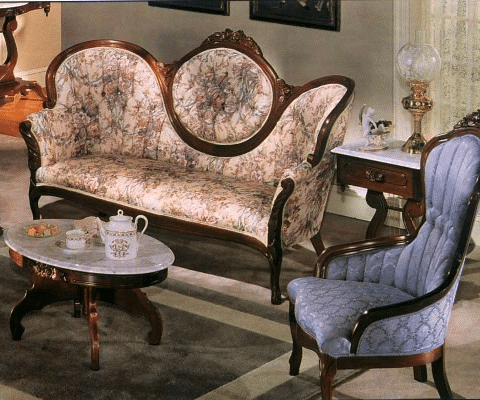
The Victorian era lasted from 1837 to 1901 and was a great change in the United Kingdom.
Named after Queen Victoria’s reign, this period saw major industry, society, and culture advancements.
These changes significantly impacted furniture design, creating an eclectic mix of styles that drew inspiration from various historical periods, such as Gothic, Rococo, and Renaissance Revival.
The rise of mass production techniques also allowed for more complex designs and increased availability of furniture to a wider range of people.
Unique Pieces
Victorian furniture is known for its distinctive and often ornate style.
Iconic pieces from this era include settees and sofas, which feature intricate carvings, luxurious upholstery, and curved shapes.
Dining tables and chairs were typically crafted from dark woods like mahogany and walnut, showcasing detailed carvings and sturdy proportions.
Dressers and cabinets from the Victorian era often incorporated elaborate inlays, mirrored panels, and brass fittings.
Renowned designers like Thomas Chippendale became famous for their exquisite carvings and graceful designs.
At the same time, manufacturers like Gillows of Lancaster and London were celebrated for their exceptional craftsmanship and innovative pieces.
3. Vintage Vinyl Records
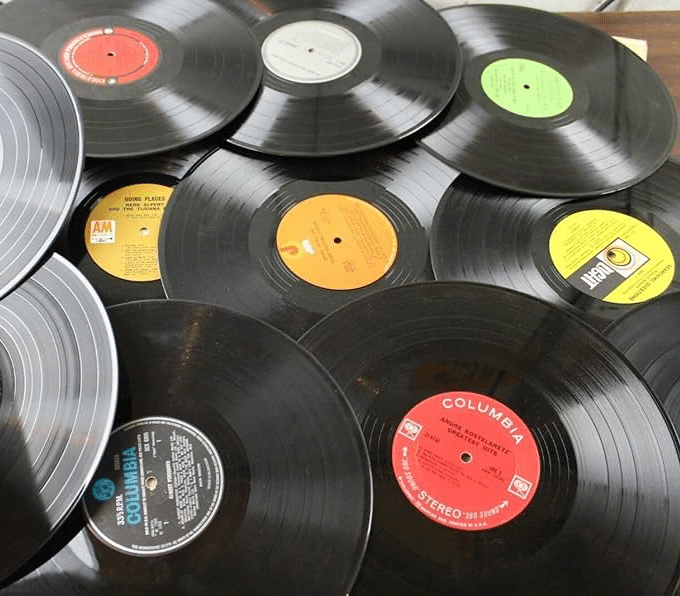
Vinyl records have a rich history that dates back to the late 1940s when they replaced shellac records.
This new format offered improved sound quality and durability, making it popular among music enthusiasts.
In 1948, Columbia Records introduced the 33 1/3 RPM LP (long-playing) record, revolutionizing the music industry by allowing longer playback times.
This enabled artists to release full-length albums, providing listeners a more immersive experience.
As technology advanced, improvements in recording techniques, such as the introduction of stereo sound, further enhanced the listening experience.
Rare and Valuable Records
Certain vinyl records have become highly sought after by collectors due to their rarity, historical significance, or association with iconic artists and albums.
For example, a low-serial-number pressing of The Beatles’ “White Album” is considered a valuable find.
Similarly, collectors highly prize Elvis Presley’s early releases on Sun Records. Pink Floyd’s “The Dark Side of the Moon” original pressing is another coveted item.
Rarity and limited editions, such as colored vinyl or special releases, also increase a record’s desirability and value.
Provenance, such as records owned or signed by the artist, can further enhance the value of a vinyl record.
4. Vintage Vehicles

Karl Benz invented the first practical automobile in 1885, while Ford revolutionized the industry by introducing the assembly line in 1913, which allowed for the mass production of vehicles.
This shift from handmade to mass-produced cars made automobiles more affordable and accessible to the general public.
Throughout the 20th century, the automotive industry saw key milestones like electric starters, hydraulic brakes, and automatic transmissions, which improved convenience and safety.
Car design and cultural influence also evolved, with Art Deco shaping aesthetics in the 1920s and 1930s, and muscle cars in the 1960s becoming symbols of American culture.
European sports cars also significantly impacted the post-World War II era, introducing new levels of performance and style.
Iconic Collectible Vehicles
Certain vintage vehicles have become highly sought-after collectibles due to their historical significance, rarity, and cultural impact.
Classic American cars like the Ford Model T, often called the car that put America on wheels, and the Chevrolet Bel Air, with its iconic 1950s fins and chrome, are prime examples.
The Ford Mustang, a symbol of the 1960s muscle car era, is another American icon.
European models such as the Jaguar E-Type, celebrated for its sleek design and performance, and the Volkswagen Beetle, known for its unique shape and widespread popularity, have also gained collectible status.
The Ferrari 250 GTO is one of the most expensive and coveted collector cars. It is renowned for its rarity and racing pedigree.
5. Vintage Jewelry

Jewelry has been a part of human culture for thousands of years, with each era leaving its mark on the design and craftsmanship of these precious pieces.
Ancient civilizations, such as Egypt, Greece, and Rome, were known for their intricate gold jewelry adorned with gemstones and symbolic motifs.
The Renaissance period saw a revival of classical themes and the creation of elaborate jewelry fit for royalty.
The Victorian era, named after Queen Victoria’s reign, was characterized by sentimental jewelry such as lockets and brooches, often featuring romantic motifs like hearts and flowers.
As time progressed, distinct style periods emerged, each with its unique aesthetic.
Notable Pieces
Throughout history, certain jewelry collections and individual pieces have gained iconic status.
The Cartier Tutti Frutti collection, with its vibrant gemstones and intricate designs, is a prime example of the brand’s mastery of color and form.
Van Cleef & Arpels’ Alhambra collection, featuring the recognizable quatrefoil motif, symbolizes the brand’s elegance and sophistication.
Tiffany & Co. has also left its mark on the jewelry world with legacy pieces like the Tiffany diamond and Jean Schlumberger’s designs.
Some pieces have become famous for their rarity, beauty, and historical significance.
6. Vintage Watches
The origins of watchmaking can be traced back to the 16th century when pocket watches were developed in Europe.
These early timepieces were primarily worn by the wealthy and were often adorned with intricate designs and precious materials.
As technology advanced and the demands of modern life changed, wristwatches began to gain popularity in the early 20th century.
Throughout the 20th century, the watchmaking industry experienced significant milestones, such as the introduction of the first automatic (self-winding) watch by Harwood in 1923 and the debut of the first digital watch, the Hamilton Pulsar, in 1972.
The development of the quartz movement in the 1960s revolutionized the accuracy and affordability of watches, making them accessible to a wider audience.
High-Value Brands and Models
Certain brands and models have become icons in vintage watches, known for their exceptional quality, design, and legacy. Rolex is renowned for its durability, prestige, and models like the Submariner and Daytona.
Patek Philippe is another highly respected brand celebrated for its exquisite craftsmanship and models like the Calatrava and Nautilus.
With its Speedmaster model worn on the moon during the Apollo missions, Omega has also earned a special place in horological history.
These iconic models, such as the Rolex Submariner, Patek Philippe Nautilus, and Omega Speedmaster, are sought after by collectors for their unique features and historical significance.
7. Vintage Violins
The violin, a beloved and iconic musical instrument, has a rich history that spans several centuries.
The violin’s origins can be traced back to the early 16th century in Italy, with Cremona emerging as a major center for violin making.
Andrea Amati, a renowned luthier from Cremona, made significant contributions to the development of the violin, establishing the foundation for the instrument we know today.
During the Baroque period (1600-1750), violin-making saw further advancements, including the introduction of the modern bow, which greatly expanded the expressive capabilities of the instrument.
In the Classical and Romantic periods, they witnessed the refinement of violin construction, with master luthiers crafting instruments played by famous composers and virtuoso performers.
Collectible Violins
Collectors and musicians highly seek after certain vintage violins due to their exceptional characteristics and historical significance.
High-value violins are often distinguished by the quality of the materials used in their construction, such as fine spruce for the top and well-seasoned maple for the back, sides, and neck.
The luthier’s craftsmanship also plays a crucial role, with the precision of the carving and the quality of the varnish contributing to the instrument’s beauty and sound.
Provenance, or the history of ownership, can significantly enhance the value of a violin, especially if renowned musicians play it.
Iconic violins, such as the “Messiah” Stradivarius and the “Il Cannone” Guarneri del Gesù, are celebrated for their superior sound quality and historical importance.
8. Vintage Video Games

The early development of video games can be traced back to the 1950s and 1960s, with pioneering projects like “Tennis for Two” and “Spacewar!” laying the foundation for the medium.
The 1970s saw the commercial launch of arcade games, with the success of Atari’s “Pong” popularizing the concept of video gaming as entertainment.
This period we also marked the introduction of home gaming consoles, starting with the Magnavox Odyssey in 1972.
The late 1970s to early 1980s are often called the golden age of arcade games.
Classics like Pac-Man, Donkey Kong, and Space Invaders captured the public’s imagination and established video gaming as a cultural phenomenon.
Iconic Games and Consoles
Throughout video game history, certain titles and consoles have stood out as landmarks, revolutionizing the medium and leaving a lasting impact on popular culture.
Nintendo’s “Super Mario Bros.” (1985) set a new standard for platform games with its tight controls, imaginative levels, and charming characters.
“The Legend of Zelda” (1986) pioneered the action-adventure genre, offering players a vast world to explore and puzzles to solve.
“Tetris” (1984), with its simple yet addictive gameplay, demonstrated the universal appeal of video games, transcending language and cultural barriers.
Regarding revolutionary consoles, the Atari 2600 was crucial in popularizing home gaming in the late 1970s.
9. Vintage Velvet Clothing
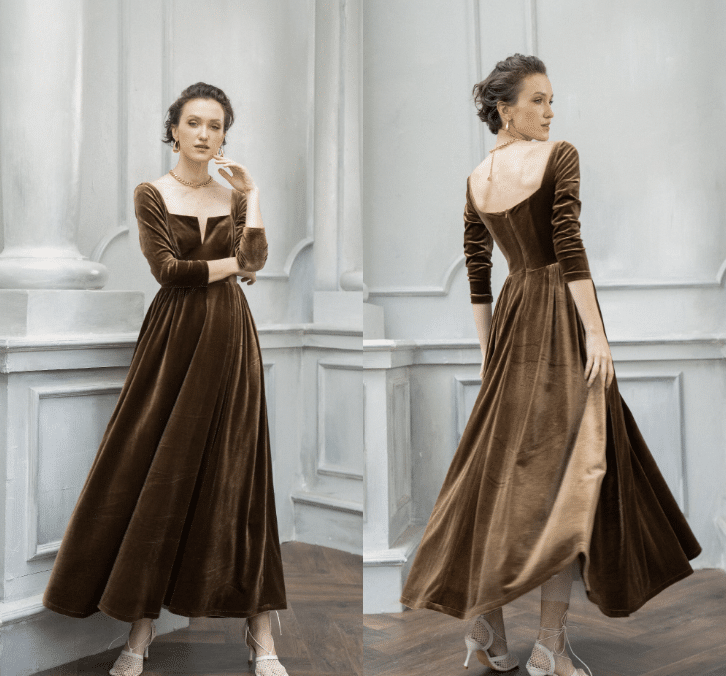
Velvet, a luxurious and timeless fabric, has a rich history that spans centuries and cultures.
Velvet’s origins can be traced back to ancient civilizations like Egypt and China, where the complex weaving process made it a highly prized and exclusive material.
Velvet was often associated with nobility and royalty, who favored the fabric for its sumptuous texture and regal appearance.
During the Renaissance, velvet became widely popular in Europe, adorning the clothing and furnishings of the wealthy and powerful.
The Industrial Revolution of the 19th century marked a turning point in velvet’s history, as advancements in textile production made the fabric more accessible to the general public.
This shift allowed velvet to enter mainstream fashion, setting the stage for its enduring presence in the 20th century.
Notable Pieces
Throughout fashion history, certain velvet garments have achieved iconic status, representing the style and essence of their respective eras.
The Little Velvet Dress, popularized in the 1920s, became a symbol of elegance and refinement, often adorned with intricate beading and embroidery.
In the 1970s, velvet blazers and suits emerged as must-have items, epitomizing the bold and eclectic fashion of the decade.
These statement pieces often featured vibrant colors paired with flared pants and platform shoes.
Designer velvet gowns, crafted by fashion houses like Valentino and Christian Dior, have long been synonymous with luxury and opulence, gracing red carpets and formal events.
Celebrity influence has also played a significant role in the popularity and enduring appeal of vintage velvet clothing.
10. Vintage Valentine Cards

The tradition of sending Valentine’s cards has a rich history that spans several centuries, dating back to the 15th century in Europe.
These early Valentine’s cards were often handmade and featured simple, heartfelt messages.
It wasn’t until the early 19th century that commercially printed Valentine cards emerged in the United Kingdom and the United States.
The Victorian era saw a significant surge in the popularity of Valentine’s cards, with designs becoming more elaborate and featuring sentimental verses.
These cards became a major cultural phenomenon by the early 20th century, reflecting the time’s evolving social customs and romantic ideals. T
Unique Designs
Vintage Valentine cards are treasured for their unique designs and artistic styles, which vary across different eras.
Victorian-era cards were renowned for their intricate lacework, embossing, and vibrant colors, creating a sense of elegance and romance.
In the early 20th century, Valentine cards began incorporating popular artistic movements such as Art Nouveau and Art Deco.
These styles were characterized by flowing lines, organic shapes, and geometric patterns, adding a touch of sophistication to the cards.
Mid-century Valentine cards often featured whimsical and cartoonish designs, reflecting the era’s more playful and lighthearted sentiments.
11. Vintage Vanity Sets
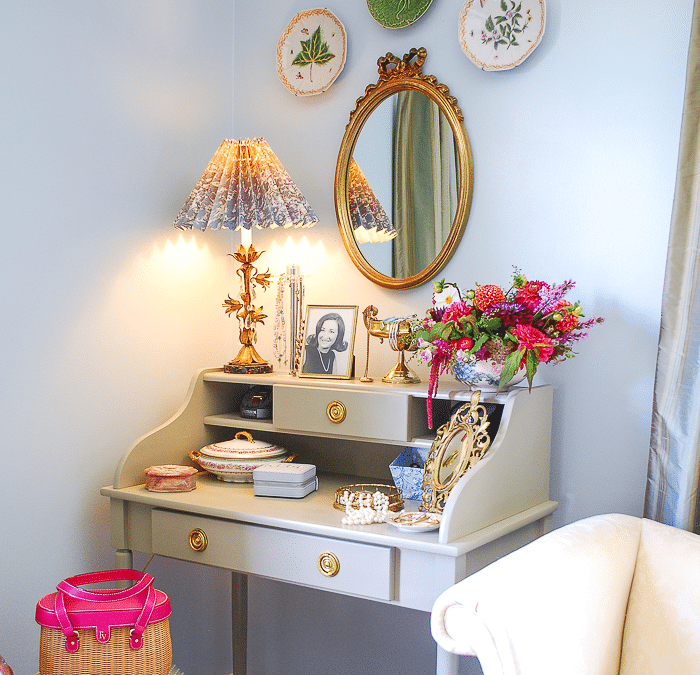
Vanity sets have a rich history that dates back to the 18th century when they first gained popularity in Europe as symbols of luxury and elegance.
These early vanity sets were often crafted from high-quality materials such as silver, gold, and porcelain and were prized possessions of the wealthy and aristocratic.
During the 19th century, the production of vanity sets increased, with a wider variety of designs and materials becoming available.
The advent of mass production techniques in the early 20th century made vanity sets more accessible to the middle class, allowing for a greater diversity of styles and price points.
Notable Designs
Vintage vanity sets are renowned for their iconic styles and the skilled craftsmanship of their makers.
Art Nouveau vanity sets, popular in the late 19th and early 20th centuries, are known for their flowing lines, floral motifs, and materials like ivory and enamel.
These sets often featured intricate designs inspired by nature and were considered the epitome of elegance and beauty.
Art Deco vanity sets, which emerged in the 1920s and 1930s, are characterized by their geometric shapes, bold colors, and modern materials like chrome and Bakelite.
These sets embodied the glamour and sophistication of the era with their striking designs and innovative use of materials.
12. Vintage Vent Toys (Ventriloquist Dolls)
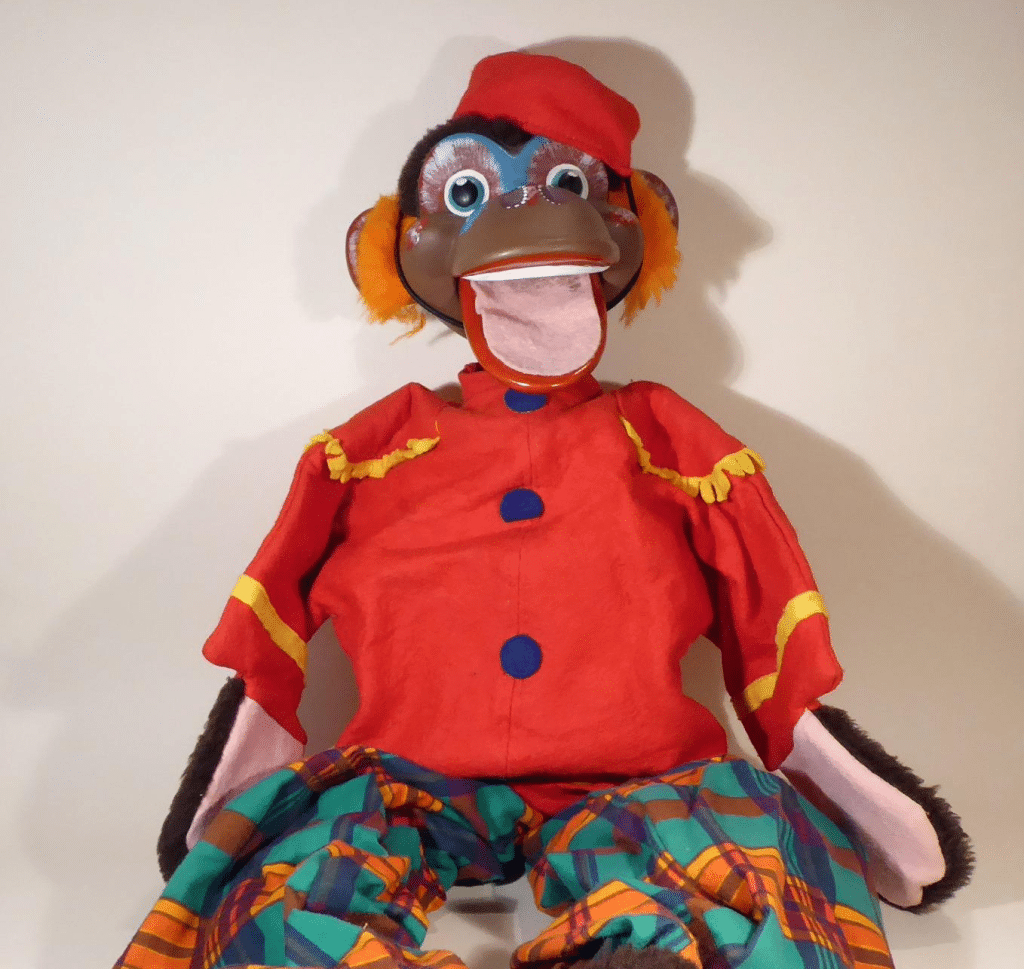
The art of ventriloquism has a fascinating history that spans thousands of years.
Its origins are rooted in the religious and spiritual practices of ancient civilizations like Egypt and Greece.
The term “ventriloquism” itself derives from the Latin words “venter” (belly) and “loqui” (speak), referring to the technique of speaking in a way that makes it appear as if the voice is emanating from another source.
During the Middle Ages, ventriloquism began to evolve into a form of entertainment, gaining popularity throughout Europe and later in America.
The late 19th and early 20th centuries marked the golden age of ventriloquism, as it became a staple in vaudeville and variety shows.
Iconic Ventriloquist Dolls
Throughout the history of ventriloquism, certain figures and their dolls have become iconic, leaving an indelible mark on popular culture.
Edgar Bergen and his dummy, Charlie McCarthy, are perhaps the most famous ventriloquist duo.
They are known for their quick-witted exchanges and successful radio shows.
Paul Winchell and his dummy, Jerry Mahoney, gained prominence through television appearances in the 1950s and 1960s, entertaining audiences with comedic routines.
Shari Lewis and her puppet, Lamb Chop, created a beloved children’s TV show that seamlessly blended ventriloquism with puppetry and captured young viewers.
These iconic ventriloquist dolls are also notable for their distinctive designs and features.
13. Vintage Vending Machines

The history of vending machines is a fascinating journey that spans centuries, with early concepts dating back to ancient Greece.
Hero of Alexandria, a renowned inventor, created a device that dispensed holy water when a coin was inserted, marking one of the first known examples of a vending machine.
However, it wasn’t until the early 1880s in London that the first modern coin-operated vending machines sold postcards and books.
As technology advanced and urbanization increased in the early 20th century, vending machines expanded their offerings to include gum, cigarettes, and beverages.
The 1930s and 1940s saw the introduction of vending machines for snacks, soft drinks, and hot beverages, becoming a common sight in public spaces.
Collectible Models
Vintage vending machines have become highly sought-after collectibles, with certain models and brands holding a special place in the hearts of enthusiasts.
The Coca-Cola vending machines from the 1940s and 1950s are particularly iconic, known for their distinctive red and white design and nostalgic appeal.
These machines have become symbols of a bygone era and are highly prized by collectors.
Vintage gumball machines, which gained popularity in the 1920s, are another beloved category of collectible vending machines.
Cigarette vending machines from the mid-20th century are also notable for their unique artwork and mechanical complexity, which attract collectors interested in design and engineering.
14. Vintage Velvet Paintings
Velvet painting is an art form with a rich history, tracing its origins back to ancient China and Japan, where artists used luxurious velvet fabric as a canvas.
The technique gained widespread popularity in the mid-20th century, particularly in Mexico and the United States, where it became known for its distinctive style and subject matter.
Velvet paintings are celebrated for their rich textures and vibrant colors.
They often depict subjects such as religious icons, lush landscapes, and captivating portraits.
Artists working with velvet often employ bold, bright colors to fully use the fabric’s ability to absorb and reflect light, resulting in eye-catching and emotionally evocative compositions.
Notable Artists and Works
Several influential artists have made significant contributions to the world of velvet painting, leaving a lasting impact on the genre.
Edgar Leeteg, often called the “Father of Velvet Painting,” is renowned for his stunning depictions of Tahitian women and tropical scenes.
Charles McPhee is another prominent artist who focuses on religious and mystical themes.
El Gallo, a Mexican artist, is celebrated for his vibrant and often surreal velvet paintings that showcase his unique artistic vision.
Some iconic works in velvet painting have become synonymous with the genre.
15. Vintage Vogue Magazines

Vogue magazine, a beacon of fashion and style, has a rich history spanning over a century.
First published in 1892 in the United States as a weekly newspaper catering to New York City’s elite, Vogue quickly established itself as a premier publication.
In 1909, Condé Nast acquired the magazine, marking a significant turning point in its evolution.
Under Nast’s leadership, Vogue transitioned into a monthly publication and expanded its focus to encompass fashion, beauty, and lifestyle.
Throughout the 20th century, Vogue became a global fashion authority, influencing trends and showcasing the best in high fashion, art, and culture. T
Iconic Issues
Certain issues of Vogue have become iconic, marking significant moments in fashion history and popular culture.
The 1966 cover featuring model Twiggy is one such example, as it heralded the rise of the “Mod” look and youth culture, signaling a new era in fashion.
Another landmark issue is the December 1988 edition, which was Anna Wintour’s first as editor-in-chief.
The cover, featuring a model wearing jeans and a couture top, represented a bold new direction for the magazine and fashion.
The September 2012 issue, the largest in Vogue’s history, underscored the significance of the September issue in setting fashion trends for the upcoming year.
Special editions and features have also contributed to Vogue’s iconic status.
16. Vintage Vinyl Toys
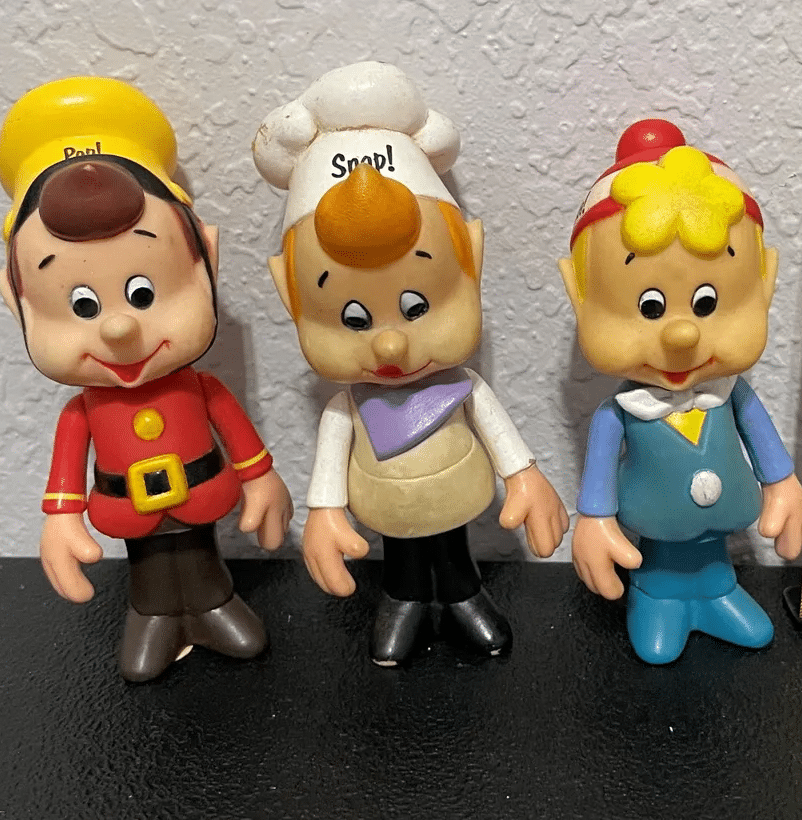
Vinyl toys have a fascinating history that began in the mid-20th century, primarily in Japan, where they were known as “sofubi” or soft vinyl.
They were using vinyl as a material that allowed toymakers to create figures that were durable, colorful, and capable of showcasing intricate details, making them appealing to children and collectors alike.
Early vinyl toys often featured popular characters from Japanese manga, anime, and kaiju (monster) films, such as the iconic Godzilla and the heroic Ultraman.
As these toys gained popularity, they helped to establish a new market for collectible figures.
Over time, vinyl toys expanded their reach and gained global popularity.
Notable Toys
Throughout the history of vinyl toys, certain figures have become iconic and highly sought after by collectors.
The original Godzilla vinyl toys from the 1960s, produced by companies like Marusan and Bullmark, are considered grail pieces for many enthusiasts.
These figures capture the essence of the legendary kaiju and serve as a testament to the early days of vinyl toy production.
Another notable line is Takara’s Microman/Micronauts series, which featured highly articulated and detailed figures that influenced many subsequent action figure designs in the West.
In American pop culture, early vinyl figures of comic book heroes like Batman and Superman, produced by companies such as Mego in the 1970s, have also become highly collectible.
These toys offer a glimpse into licensed merchandise’s early days and the iconic characters’ enduring appeal.
17. Vintage Velvet Lampshades
Velvet lampshades have a rich history that reflects the evolution of interior design and lighting.
These elegant shades gained popularity in the late 19th and early 20th centuries, coinciding with the widespread adoption of electric lighting in homes and establishments.
Initially, velvet lampshades were associated with luxury and sophistication, often found in high-end residences and upscale venues.
As time progressed, the popularity of velvet lampshades continued through various design movements, such as the Art Deco period of the 1920s and 1930s and the mid-century modern era of the 1950s and 1960s.
These lampshades served a functional purpose and significantly contributed to a room’s overall ambiance, providing a warm and inviting glow.
Unique Designs
Vintage velvet lampshades come in various iconic styles that reflect different historical periods.
Victorian-era lampshades are known for ornate designs with intricate embroidery, beading, tassels, and fringe, typically in deep, rich colors.
Art Deco lampshades from the 1920s and 1930s feature bold geometric patterns, vibrant colors, and sleek lines, embodying the modern and glamorous spirit of the time.
Mid-century modern lampshades from the 1950s and 1960s showcase minimalist designs with clean lines and pastel colors, reflecting the era’s simplicity and functionality.
These lampshades are also prized for their craftsmanship.
They often feature hand-stitched details like delicate embroidery and beading, adding to their visual appeal and artistic value.
18. Vintage Velvet Jewelry Boxes
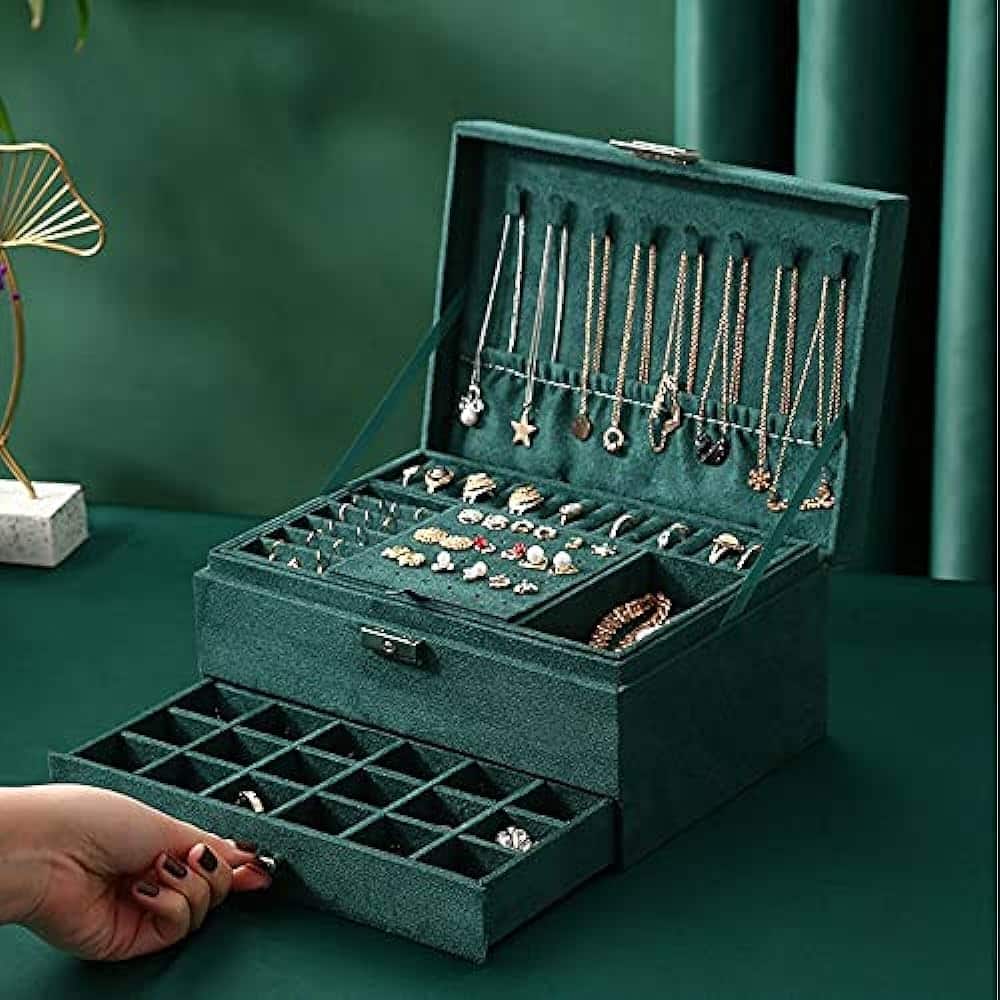
Velvet jewelry boxes have a rich history dating back to the 19th century when they were used to store and protect valuable jewelry.
These luxurious boxes were often given as gifts or passed down as heirlooms, symbolizing wealth, status, and the importance of the jewelry they contained.
The use of velvet as a lining material provided a soft, plush surface that protected the precious items inside and enhanced their visual appeal and perceived value.
The craftsmanship and attention to detail in these boxes reflected the significance of the jewelry they housed and the social and cultural norms of the time.
Velvet jewelry boxes were particularly popular among the upper classes, who appreciated their refined aesthetics and how they showcased their affluence and taste.
These boxes often played a role in significant life events, such as engagements, weddings, and anniversaries, where they were used to present and store cherished jewelry pieces.
Unique Designs
Vintage velvet jewelry boxes come in various iconic styles and designs that reflect different historical periods’ artistic movements and aesthetics.
Victorian-era boxes, for example, are known for their ornate and intricate designs, often featuring elaborate embellishments, rich colors, and luxurious materials.
These boxes exemplify the luxury and attention to detail that characterized the Victorian period.
Art Nouveau jewelry boxes, on the other hand, are distinguished by their flowing lines, organic forms, and nature-inspired motifs, such as flowers and vines.
These boxes embody the elegance and sophistication of the Art Nouveau movement, which sought to bring beauty and artistry into everyday objects.
In contrast, Art Deco jewelry boxes are characterized by their bold geometric patterns, clean lines, and vibrant colors, reflecting the modern and streamlined aesthetics of the 1920s and 1930s.
These boxes often feature striking combinations of materials, such as wood, metal, and enamel, creating a sleek and stylish appearance.
In addition to their overall design, vintage velvet jewelry boxes are prized for their unique features and craftsmanship.
19. Vintage Velvet Handbags
Velvet handbags have a rich history in fashion, dating back to the late 19th and early 20th centuries.
These luxurious accessories became increasingly popular during this time, reflecting the opulent tastes and styles of the era.
Initially, velvet handbags were favored by the upper class, who appreciated their sumptuous texture and elegant appearance.
They were often reserved for special occasions and evening events, complementing fashionable women’s lavish gowns and jewelry.
As fashion evolved in the 20th century, velvet handbags adapted to new designs.
They featured bold geometric patterns during the Art Deco movement of the 1920s and 1930s and adopted sleek, minimalist styles in the mid-century modern era.
Despite these changes, velvet handbags remained a symbol of sophistication and glamour, often associated with the world of high fashion.
Iconic Designs
Vintage velvet handbags come in various iconic styles and designs that reflect the fashion trends and aesthetics of different eras.
Victorian velvet handbags, for example, are known for their ornate embellishments, which often include delicate lace, intricate beadwork, and exquisite embroidery.
These handbags exemplify the romanticism and attention to detail that characterized the Victorian era.
Conversely, Art Deco handbags are distinguished by their bold geometric patterns, vibrant colors, and sleek, streamlined designs.
These bags perfectly capture the modernity and glamour of the 1920s and 1930s, with their striking visual appeal and innovative use of materials.
Mid-century modern velvet handbags showcase a shift towards minimalism and functionality.
They often feature clean lines, understated elegance, and the incorporation of materials like metal clasps and frames.
20. Vintage Velvet Upholstered Furniture

Velvet-upholstered furniture has a rich history that dates back to the Renaissance period in Europe when it was seen as a symbol of luxury and sophistication.
Velvet became increasingly popular in furniture design during the 18th and 19th centuries, particularly in France and England, where it was favored for its sumptuous texture, vibrant colors, and durability.
The use of velvet in high-end furniture reflected the wealth and status of its owners, as the material was often costly and required skilled craftsmanship to produce.
The popularity of velvet in furniture continued into the 20th century, with mid-century modern designers incorporating the fabric in new and innovative ways, showcasing its versatility and timeless appeal.
Notable Pieces
Vintage velvet upholstered furniture has various iconic styles that reflect different historical periods.
Art Deco furniture from the 1920s and 1930s features sleek lines, bold geometric patterns, and luxurious velvet in vibrant hues, reflecting the glamour of the time.
Mid-century modern pieces from the 1950s and 1960s showcase minimalism with clean lines, organic shapes, and bold velvet upholstery.
Thomas Chippendale, an 18th-century cabinetmaker, is known for his intricate designs and plush velvet upholstery. George Hepplewhite, another 18th-century designer, is celebrated for his elegant furniture with luxurious velvet.
In the mid-20th century, designers like Eero Saarinen and Florence Knoll used velvet upholstery innovatively, cementing its place in modern design.
Conclusion
Our journey through vintage items, starting with “V,” has explored history, craftsmanship, and collectibility.
Each item, from the luxurious velvet furniture to the intricate antique vases, offers a unique glimpse into the past.
Collectors’ passion for these remarkable items is driven by the thrill of the hunt and the joy of owning a piece of history.
Whether you’re a seasoned collector or appreciate vintage beauty, we hope this guide has inspired you to explore vintage collectibles further.

